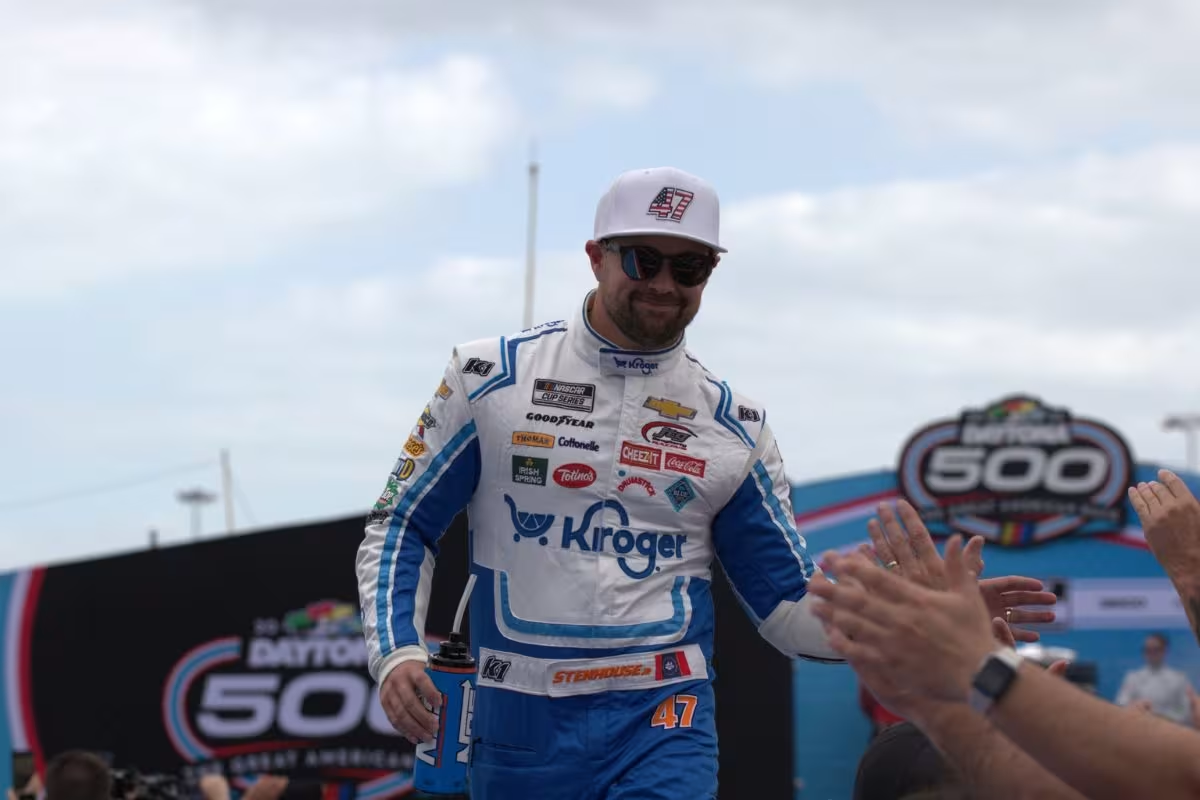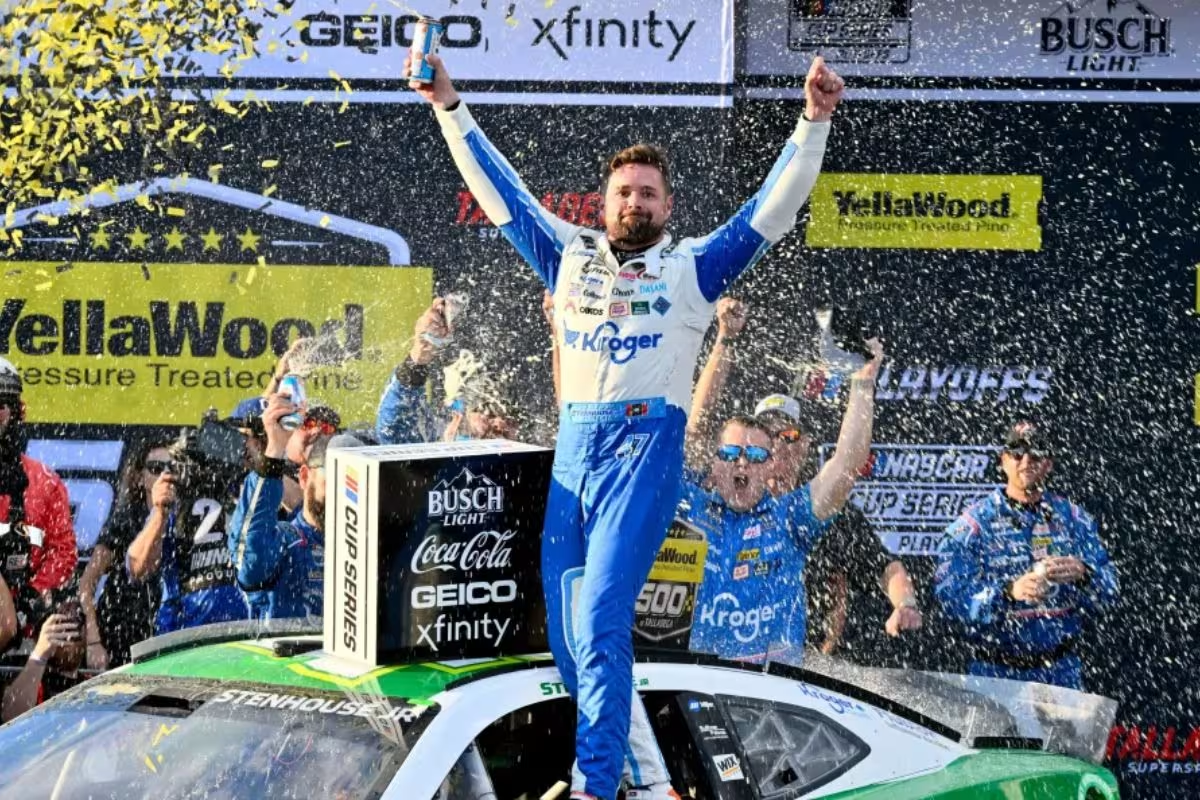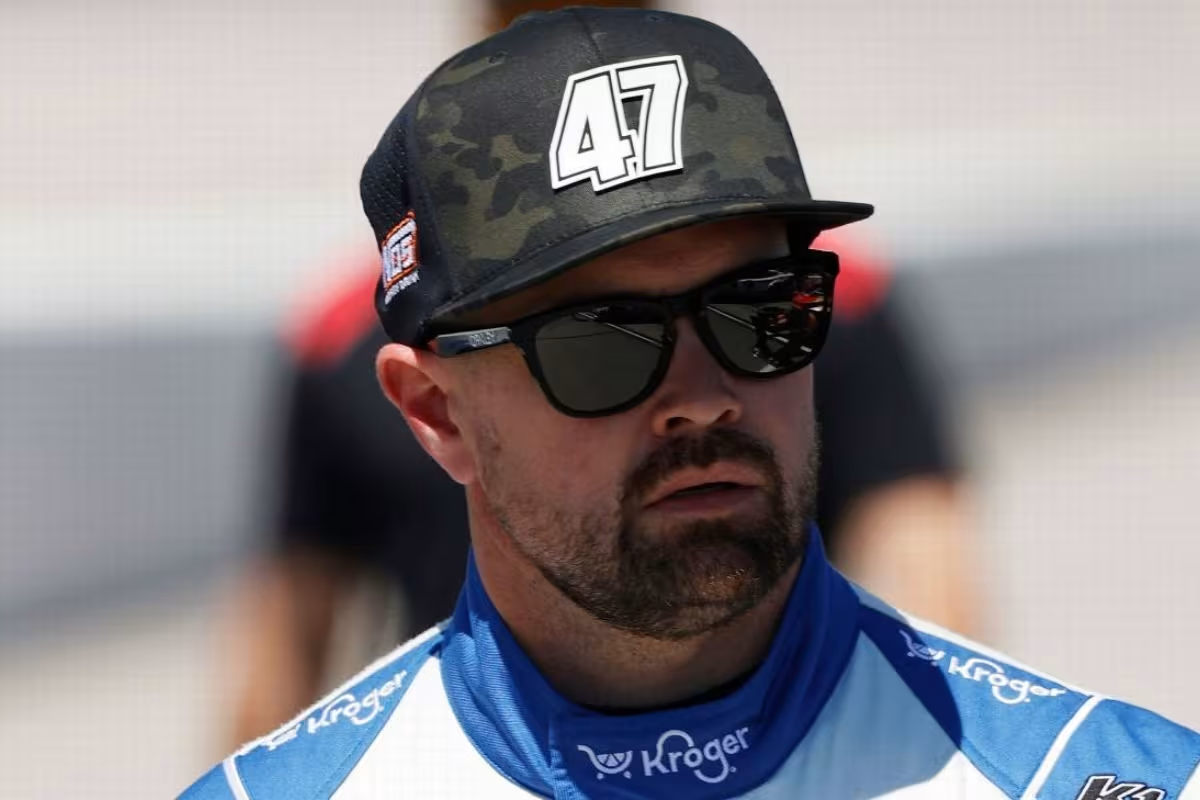Chevrolet’s Alliance Help Ricky Stenhouse Jr. Win: Ricky Stenhouse Jr. pulled off an amazing win at Talladega, thanks in part to his teammates from Chevrolet. Stenhouse, along with William Byron and Chase Elliott, worked together using smart drafting and positioning to stay ahead. Byron’s push and Elliott’s help were key during the race, especially when “The Big One” changed everything. While some people question the impact of teamwork in NASCAR, this race showed just how important it can be.
Key Highlights
- Chevrolet drivers formed a tactical alliance, which was crucial in enhancing Stenhouse Jr.’s performance during the YellaWood 500 at Talladega.
- Byron’s strategic push helped Stenhouse gain position and maintain momentum, directly contributing to his victory.
- Crew chief instructions effectively isolated Keselowski, limiting his competitiveness and allowing Stenhouse to capitalize on the situation.
- The avoidance of “The Big One” wreck allowed Stenhouse to navigate the chaos and secure a favorable position for the win.
- Ongoing debates about manufacturer alliances highlight concerns over fairness, competition, and the influence of teamwork in NASCAR outcomes.
Overview of Ricky Stenhouse Jr.’s Victory at Talladega
Ricky Stenhouse Jr. seized a pivotal moment in his racing career with a dramatic victory at Talladega, a triumph that not only spotlighted his skills but also highlighted the importance of tactical alliances in NASCAR.
The YellaWood 500 served as a defining race in Stenhouse’s season, showcasing his ability to navigate the intricacies of superspeedway racing. With just five laps remaining, the race took a critical turn following “the Big One,” a multicar wreck that reshuffled the field and set the stage for an intense confrontation.
In the closing laps, Stenhouse found himself engaged in a fierce battle with Brad Keselowski, who was embroiled in controversy due to his role in the earlier wreck. This scenario emphasized the volatility of racing dynamics, where fortunes can shift dramatically in moments.
Stenhouse’s victory was not merely a product of individual skill; it relied heavily on the tactical positioning and support from his racing allies throughout the event.
The race exemplified how alliances within the NASCAR ecosystem can influence outcomes, particularly in high-stakes environments like Talladega. As drivers jockey for position, the subtle interplay of cooperation and competition defines the racing landscape.
Chevrolet Alliance and Its Impact on the Race
The tactical alliance among Chevrolet drivers played a vital role in shaping the outcome of the YellaWood 500 at Talladega, underscoring the importance of teamwork in NASCAR’s competitive landscape. With Ricky Stenhouse Jr., William Byron, and Kyle Larson all behind the wheel of Chevrolet vehicles, their synchronized efforts were pivotal in maneuvering the complex dynamics of restrictor plate racing, where drafting and tactical positioning are essential.
In the closing laps, the Chevrolet trio executed a well-orchestrated strategy that showcased their collective strength. Byron’s aggressive pushing of Stenhouse Jr. directly contributed to the latter’s victory, demonstrating the power of coordinated teamwork.
Meanwhile, Larson’s crew chief issued clear instructions to refrain from providing any similar support to Ford driver Brad Keselowski, a decision that ultimately isolated Keselowski in a highly competitive field. This tactical maneuvering exemplifies how alliances can dictate the flow of a race, placing the drivers in a position to exploit each other’s strengths while undermining the competition’s advantages.
The culmination of these actions secured Stenhouse Jr.’s win and highlighted the broader implications of manufacturer alliances in NASCAR. Such collaborations encourage a unique racing environment where the synergy between drivers can greatly alter race outcomes.
The Chevrolet alliance’s impact at Talladega serves as a compelling case study for teams looking to utilize teamwork and tactical planning to achieve success in the fiercely contested world of stock car racing.
Stenhouse Jr. Discusses the Race Dynamics on Harvick’s Podcast
During a recent episode of Kevin Harvick’s podcast, the dynamics of the YellaWood 500 were thoroughly examined through the lens of Ricky Stenhouse Jr.’s experience. Stenhouse Jr. discussed the significant moments of the race, particularly the vital alliances formed among Chevrolet drivers, which facilitated his ascent to the front of the grid. The collaboration became evident when Chase Elliott’s push positioned Stenhouse favorably just before the chaos unfolded in the race.
As the infamous “Big One” wreaked havoc on the track, Stenhouse Jr. managed to evade disaster, a stroke of luck that ultimately led to his victory. Harvick asked into the intensity of the wreck, prompting Stenhouse to recount how close he was to losing control.
“I think when you look at that wreck, how close was the car to kind of being out of control? Because it ripped a hole in the door that was almost to the metal in certain spots. So how close was that for you?”- Harvick
“I just got smoked in the door. It happened so fast. Luckily, it hit me dead center in the car, and I felt like it just moved my car up a lane a little bit.” – Stenhouse
This dialogue reveals not only the importance of alliances but also the split-second decisions that define success in NASCAR.
Race Strategy and Dynamics Post-Wreck
While the chaos of the wreck reshaped the race landscape, it also provided a unique opportunity for tactical maneuvering among the Chevrolet drivers. In the aftermath, Ricky Stenhouse Jr. benefited considerably from the alliance with his teammates, particularly Chase Elliott, who played a vital role in ensuring Stenhouse maintained his competitive position.
The damage sustained in the wreck, which particularly bent the door bars of Stenhouse’s car, could have hindered his performance. However, with tactical support from Elliott, who assisted him to the front, Stenhouse was able to utilize the Chevrolet partnership to his advantage.
“It [the impact] bent the door bars; I mean, it hit a ton. So, at that time, I was bummed because I felt like if we were racing it out—and I talked to Chase afterward—he was able to get me to the start/finish line, kind of in front of the 2 for 95% of the laps that we were battling there.” -Stenhouse
As the race resumed following the green-white-checkered flag, Stenhouse’s understanding of the race dynamics proved fundamental. He recognized the absence of a viable alternate lane, which allowed him to feel secure in his position on the track.
The alliance among the Chevrolet drivers became evident as Stenhouse noted, “I had all my Chevy teammates behind me,” creating a formidable block against competitors.
“We had enough fuel and all that, and I had all my Chevy teammates behind me, so I felt comfortable about that.” – Stenhouse
Throughout the final laps, the synergy among the Chevrolet contingent was evident. Stenhouse’s collaboration with William Byron exemplified effective drafting approach, as Byron’s push through Turn 4 propelled Stenhouse towards the finish line.
The Controversy of Manufacturer Influence in the Race
Manufacturer influence in racing, particularly in NASCAR, has long been a topic of heated debate among fans and competitors alike. The dramatic events at Talladega serve as a vivid illustration of this ongoing controversy. With three Chevrolets battling alongside Brad Keselowski’s Ford in the closing laps, the dynamics of teamwork and strategy came to the forefront.
Kyle Larson, who was positioned behind Keselowski, received instructions from his crew chief to ease off the throttle, effectively stifling any chance for Keselowski to gain an advantage.
In clear contrast, William Byron’s relentless push for Ricky Stenhouse Jr. exemplified the intricate web of alliances that often defines superspeedway racing. This tactical maneuvering sparked an intense online debate regarding the legitimacy of such manufacturer influence. Critics argue that the deliberate orchestration of driver interactions undermines the competitive spirit of the sport, raising questions about the fairness of outcomes influenced by corporate alliances.
Nevertheless, NASCAR’s regulations deem Stenhouse Jr.’s victory legitimate, marking a noteworthy turnaround for a driver who had faced a challenging season. This scenario poses a compelling inquiry into the nature of competition in NASCAR: should the sport adopt the alliances formed between manufacturers, or should it seek to enforce a more stringent separation to preserve individual merit?
News in Brief: Chevrolet’s Alliance Help Ricky Stenhouse Jr. Win
The interplay between Chevrolet’s alliance and racing strategy greatly influenced Ricky Stenhouse Jr.’s victory at Talladega. The collaboration among Chevrolet teams showcased the potential advantages of manufacturer partnerships in NASCAR. Stenhouse Jr.’s insights on race dynamics further illuminate the complexities of competitive racing. Ultimately, the controversy surrounding manufacturer influence prompts critical reflection on the evolving nature of teamwork and strategy within the sport, raising questions about fairness and integrity in the pursuit of victory.
ALSO READ: Ricky Stenhouse Jr. Gets Real About Adding Misery to Kyle Busch at Talladega: “I Didn’t Care”




